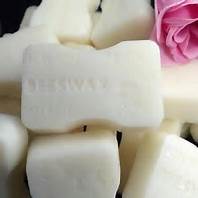Cosmetics Unmasked - Colorants And Fragrances









Cosmetics Unmasked - Colorants And Fragrances
Relax in a sea of fragrant bubbles
Ease Your mind and soak away your troubles
But before you add the colorful gloop
And immerse yourself in the chemical soup Remember - plain hot water can ease your bones
Without irritating your sensitive zones.
The importance of colors and fragrances in the cosmetics industry must not be underestimated. If a shampoo is to be successful in the marketplace, it must smell as though it can clean your hair, and it must disguise the watery, gray colour of the main ingredients. But many adverse reactions to cosmetics and toiletries have been linked to colorants and fragrance chemicals and for this reason hypoallergenic products are usually unscented and uncolored. What follows is a detailed look at these ingredients.
COLORANTS
As the name suggests, colorants are pigments of colored chemicals. They are used on their own or mixed with other colorants to impact a certain tint or shade to cosmetics and toiletries. Some are used to color the products to improve its appearance, or to temporarily impart that color or hue to the skin.
Other colorants, for example hair dyes, are designed to produce a longer-lasting color change. The range of colors available to cosmetic manufacturers is vast. Colorants can be dyes or lakes. A dye is a natural extract, or a synthetic coal tar or azo dye, this is soluble in water., they can disperse evenly through cosmetics and toiletries producing clear, colored liquids. They can also absorb into hair and fibres of textiles and paper.
Some dyes fade when exposed to bright lights. They can also fade from hair or fabrics if they are leeched out during washing. Lakes are made by combining dyes with metals - usually chromium, aluminum, zirconium, or manganese. They are usually more durable than dyes because they are insoluble in water and are not leeched out during washing. They are often used in make-up because they do not run or stain clothing.
"Interference" colors are rapidly becoming popular, especially with younger people. In the same way that glass prisms, diamonds, and rain drops can produce spectacular rainbow colours, combinations of solid pigments can cause interference patterns of light that sparkle with gold, red, green, blue, and silver. One such combination, used in eye shadow and lipstick , is black mica - mica, a natural mineral found in volcanic rocks such as granite , coated with black iron oxide, another natural mineral, although both minerals can be produced artificially.
"Active" colors respond to physiological changes in the skin and undergo dramatic color changes. They are mainly used in lipstick and colored lip gloss, and less commonly in eye-makeup. Temperature changes, moisture variation, sebum secretions, and changes in acidity, can all cause the pigments to change color. Some people like to believe these active colours can act as a barometer for mood, emotion, or sexual arousal, but they are more likely to indicate the temperature and humidity or the surroundings.
COAL TAR DYES
At one time the only source of raw material for the manufacturer of artificial dyes was coal tar. This is a chemical soup, obtained when coal is heated strongly in the absence of air, so that it cannot burn. From this sticky, black chemical substance, a large number of useful compounds are obtained, including aniline, cresols, naphthols and phenols - the raw materials for making coal tar dyes. Dyes made using aniline are called aniline dyes or azo dyes. Dyes made from the other extracts were simply called tar dyes. Although now we obtain most of these chemicals from petroleum, they still tend to be called coal tar dyes.
AZO DYES
Azo dyes were first made in the nineteenth century by Sir William Henry Perkin, and English chemist who, after making a synthetic mauve dye from a coal tar extract (aniline), a color reserved by its rarity for kings, emperors, and popes, founded the British aniline or azodye industry and transformed the manufacture of textiles during the Industrial Revolution. These coal tar dyes are still in common use todday and find their way into every aspect of our lives, including our foods and cosmetics.
The following colorants are all synthetic azo dyes:
| Acid Red 195 | C1 15525 | C1 18130 |
| C1 11680 | C1 15580 | C1 18690 |
| C1 11710 | C1 15620 | C1 18736 |
| C1 11920 | C1 15800 (D&C Red #31) | C1 19140 (FD & C Yellow #5) |
| C1 12010 | C1 15850 (D&C Red #6) | C1 191140:1 |
| C1 12985 (D&C Red #36) | C1 15865 | C1 20040 |
| C1 12120 | C1 15865 | C1 20170 |
| C1 12150 | C1 15880 (D&C Red #34 | C1 21100 |
| C1 12370 | C1 15985 (FD&C Yellow #6) | C1 21108 |
| C1 12420 | C1 15985:1 | C1 21230 |
| C1 12480 | C1 16035 (FD&C Red #40) | C1 24790 |
| C1 12490 | C1 16185 | C1 26100 |
| C1 13015 | C1 16185:1 | C1 27290 |
| C1 14270 | C1 16230 | C1 27755 |
| C1 14700 (FD&C Red #4) | C1 16255 | C128440 |
| C1 14720 | C1 16290 | C1 40215 |
| C1 1485 | C1 17200 | D&C Red #7 |
| C1 15510 (D&C Orange #4) | C1 18050 | D&C Red #39 |
Some people are sensitive to azo dyes.
Some people are sensitive to azo and coal tar dyes. Those who are particularly at risk are asthmatics, eczema sufferers, and people who are sensitive to aspirin. The effects of these chemicals are many and varied, ranging from hyperactivity in children to severe headaches. Other reported symptoms include breathing difficulties, asthmatic attacks, itching and watering eyes and nose, blurred vision, skin rashes, swelling (with fluid retention in serious cases ), and changes in blood platelets, which control the clotting process after injury.
Reference: Cosmetics Unmasked : Dr Stephen & Gina Antczak
Articles-Latest
- Skin tags: Why they develop, and how to remove them
- So That’s Why Your Skin Gets Crepey As You Get Older
- Eye Infection from False Eyelashes
- Teeth stain removal and whitening solutions
- Benefits of collagen for skin
- Why vitamin E should be part of your skincare regime
- Can gray hair be reversed?
- Hair loss affects 1 in 10 women before the menopause – here’s how to treat it
- Conscious ageing and Black skin: What happens when Black does crack?
- Your skin color may affect how well a medication works for you — but the research is way behind
- The C word Cancer
- Astringents
- How does light therapy work? The science behind the popular skincare treatment
- The Most Offensive Fashion Police Criticisms of All Time
- Everything you need to know about lip filler migration, as told by the experts
- Pig semen and menstrual blood – how our ancestors perfected the art of seduction
- Everything you need to know about benzoyl peroxide
- We've bleached, relaxed, and damaged our hair to make ourselves look more white
- Will this be the year that facial filler is cancelled?
- Shock of the old: 10 painful and poisonous beauty treatments
Cosmetic ingredients
LOGIN
Who's On Line
We have 64 guests and no members online
Articles-Most Read
- Home
- White Bees Wax
- Leucidal
- Cosmetic Preservatives A-Z
- Caprylyl Glycol
- Cosmetics Unmasked - How Safe Are Colorants?
- Cosmetics Unmasked - Choosing Ingredients
- Cosmetics Unmasked - Colorants And Fragrances
- EcoSilk
- Toxic Beauty - Who's Looking At Cosmetics?
- Cosmetics Unmasked - Fragrances
- Microbes and Cosmetics
- Chemicals Lingering In The Environment
- Yellow Bees Wax
- Microbes and Safety Standards
- Potassium Sorbate
- Toxic Beauty - Hazardous To Your Health
- Synthetics In Cosmetics - The Industry Fights Back
- What's Happening in the USA - Cosmetic Regulations - Toxic Beauty
- Fresh Goat's Milk Soap
- Active Ingredients
- Cosmetics Unmasked - Listing Cosmetics
- Toxic Beauty - Cocktails and Low Doses
- Natural Waxes A-Z
- Natural Butters A-Z



